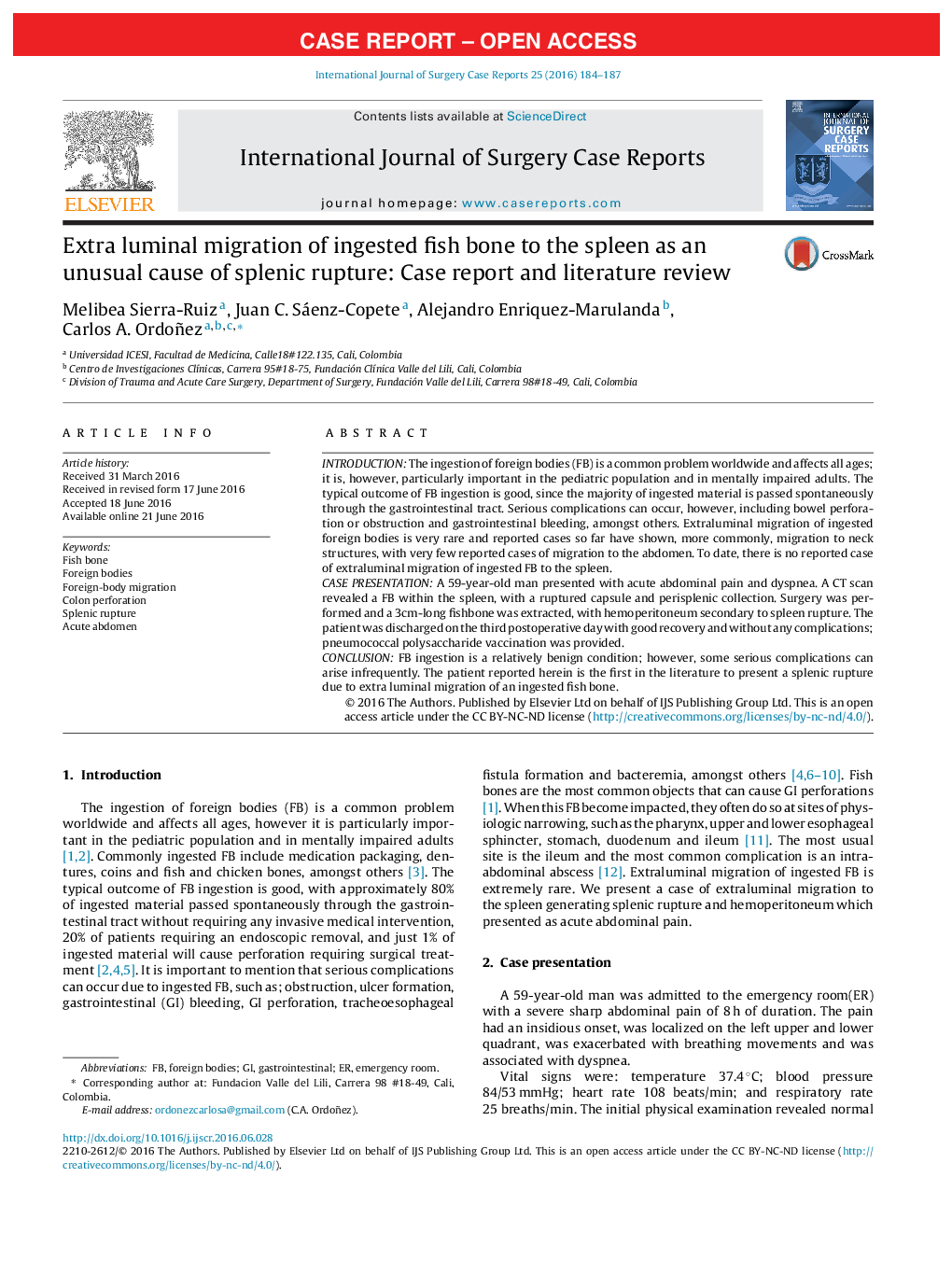| Article ID | Journal | Published Year | Pages | File Type |
|---|---|---|---|---|
| 4288436 | International Journal of Surgery Case Reports | 2016 | 4 Pages |
•Foreign body ingestion is a relatively common and benign condition; some serious complications, however, can arise.•Approximately 1% of all ingested FB will cause perforation requiring surgical treatment.•Sharp FB, such as fish bones, chicken bones and needles, are more prone to migrate outside the gastrointestinal lumen if they are not removed early.•The patient reported here is the first one in the literature to present a splenic rupture due to extra-luminal migration of an ingested fish bone through the splenic flexure of the colon.
IntroductionThe ingestion of foreign bodies (FB) is a common problem worldwide and affects all ages; it is, however, particularly important in the pediatric population and in mentally impaired adults. The typical outcome of FB ingestion is good, since the majority of ingested material is passed spontaneously through the gastrointestinal tract. Serious complications can occur, however, including bowel perforation or obstruction and gastrointestinal bleeding, amongst others. Extraluminal migration of ingested foreign bodies is very rare and reported cases so far have shown, more commonly, migration to neck structures, with very few reported cases of migration to the abdomen. To date, there is no reported case of extraluminal migration of ingested FB to the spleen.Case presentationA 59-year-old man presented with acute abdominal pain and dyspnea. A CT scan revealed a FB within the spleen, with a ruptured capsule and perisplenic collection. Surgery was performed and a 3cm-long fishbone was extracted, with hemoperitoneum secondary to spleen rupture. The patient was discharged on the third postoperative day with good recovery and without any complications; pneumococcal polysaccharide vaccination was provided.ConclusionFB ingestion is a relatively benign condition; however, some serious complications can arise infrequently. The patient reported herein is the first in the literature to present a splenic rupture due to extra luminal migration of an ingested fish bone.
